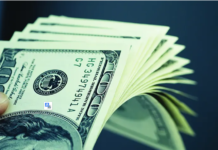
Everything of the Bangladesh economy seems to be in place except for that vital spark – investment. Despite conducive macro-economic conditions, the country cannot step up from that 6% growth trap, simply due to stagnant investment.
Most of the economic indicators at the moment are positive. Inflation is under control, remittances are on an upward spiral. Foreign currency reserves are at an all-time high. The exchange rate is fine. Though export growth has been insignificant, imports have increased. Transactions are under control.
The global economy is doing well. Europe and the US are making an effort to overcome the recession. Food prices are low, and so is the price of fuel oil. This has boosted the government’s savings. The government is making a profit on fuel oil sales.
Despite all these positive indicators, the growth in gross domestic product (GDP) remains static at around 6 percent. Worse still, over the last three financial years, the growth rate has been slipping.
However much finance minister Abul Maal Abdul Muhith expands the budget, the growth rate continues to fall.
AMA Muhith put forward his first budget for the Awami League government in the 2009-10 fiscal year. The budgetary outlay was Tk 1.13 trillion and the growth had been 5.57%. In the next two fiscals, the growth had gone up to 6.52%, the highest in seven years. From then on, the budget has increased and the growth rate has declined.
The budget for the 2012-13 fiscal was of Tk 1.91 trillion. Growth rate went down to 6.01%.
The 2013-14 outlay was Tk 2.22 trillion which saw a GDP of only 6.12%.
The current fiscal’s budget is Tk 2.5 trillion. The World Bank’s estimate is that this time the growth has been 5.6%, though the government puts this at 6.51%. The projection at the beginning of the year was 7.3%.
The finance minister year has an impressive projection, but cannot perform. In the 2012-13 the finance minister had said the growth rate would be 8%.
On 4 June the finance minister is coming up with another massive budget. This time it’s over Tk 3 trillion, with hopes of a 7% or 7.1% growth rate. The World Bank has said, if the growth progresses at this rate, Bangladesh will not be able to reach mid-income status by 2021. It will have to reach a 7% to 8% growth rate on average every year. At the present growth rate Bangladesh will achieve a lower mid-income status at the most.
Debapriya Bhattacharya, renowned economist and distinguished fellow at the Center for Policy Dialogue (CPD), told Prothom Alo, the finance minister is being able to present the budget this time with more convenience than every before. There are lower inflation, stable exchange rate, downward interest rates, acceptable budge deficit and overall positive foreign transactions. And with oil prices falling in the international market, there is scope to keep fertiliser and other subsidies in control.
The problem is, despite all these plus points, private investment has not picked up. The biggest challenge for the finance minister in this budget will be to effectively utilise the positives in the macro-economy.
Failure in investment: The investment rate in the country at present is 28.7% of the GDP. Investments must go up by at least 5% if the growth rate is to increase. The main investment must come from the private sector. Yet for 10 years now, private investment has been stuck at 21% to 22%, falling further in the last two years.
Two years of political unrest has kept a lid on investment growth. There are the high interest rates, infrastructure problems and uncertainty. Failing to boost private investment, the finance minister has chosen an alternative tactic, that is, public sector investment. The annual development programme (ADP) has also been enhanced. Just five fiscals ago, public investment was just over 4%; now it is almost 7.5%.
All indicators are not good: Two important economic indicators are not good. Exports have just about kept up marginal growth. In the 10 months (July-April) of the financial year, export growth has only been 2.63%. Even last fiscal it had been 11.5%. Imports have gone up in the corresponding period. Till march imports have increased by over 12%, which was 9% in the corresponding period last fiscal. As a result, trade imbalance has increased.
The government’s budget planning depends greatly on revenue earnings. This financial year there will be a large deficit in revenue income.
The fiscal year is hardly over and the national board of revenue (NBR) has already reduced the revenue target by 150 billion and set a new target at Tk 1.35 trillion. Even less will be collected.
Debapriya Bhattacharya feels, accumulation of wealth will be another challenge in this budget. The budget deficit may increase.
Finally Debapriya said, financial incentives will not break the 6% growth deadlock. The reforms initiative that the Awami League government had taken up in the first two or two and half years, has fizzled out. These included denationalisation, public administration, preventing money laundering, spending funds through local government, new foreign policy dynamics and so on. Unless these reforms come through the budget and are categorically implemented, these will amount to nothing. And the political uncertainly remains.
Source: Prothom Alo









